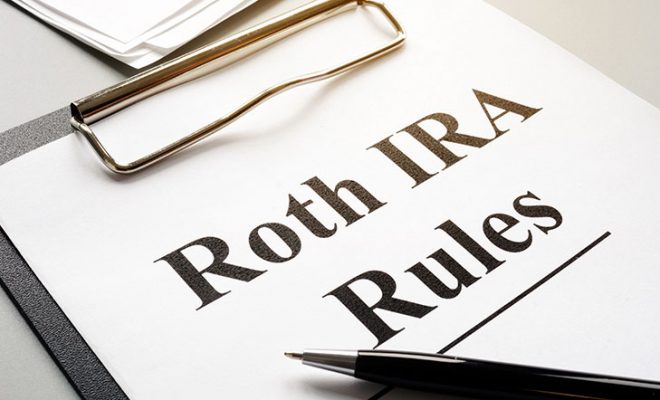Retirement Income Planning Strategies to Ease Your Retirement

Through your working years, you must have tried a number of savings and investment instruments to build your retirement corpus. Most people focus on saving for retirement. But not many are prepared for the day when it finally arrives. Just having enough money in the bank will not ensure a comfortable retirement. What matters more is how cautiously and prudently you save along the way and how efficiently you use these funds when the time arrives. With so many types of retirement accounts in the market, developing key strategies for your golden years is the first step towards financial freedom.
Here are some retirement income planning strategies that can ease your retirement planning:
- Differentiate your retirement needs from your retirement wants
As you grow older, your needs and wants are bound to differ from what they are now. Factors such as health, daily essentials, home care, etc. are likely to take precedence over travel, dining out, and gym subscriptions. Your income too will be largely limited to the amount of money you are able to save before you officially retire. With a fixed amount of money at your disposal, it becomes essential to identify and list all your needs and wants. This will help you use your retirement income more efficiently. As is evident, your needs should be given precedence over your wants. You can create a monthly budget for all your expenses. After having spent the month’s quota on your needs, you can then move on to your wants. This will help you to keep your expenditure in check and eliminate the possibility of unnecessary splurging. - Develop a retirement withdrawal plan
The money that you save in retirement accounts such as the 401(k) account or the individual retirement account (IRA) should ideally last you all your life. This implies that if you retire at the age of 65 years and live on till the age of 90 years, you will have to account for 25 years of expenditure from your retirement income. This will likely be a time filled with many expenses such as travel, healthcare, hospice or home care needs, and more. Having a clear withdrawal plan can help you use your retirement funds optimally, thereby reducing the chances of running out of money and depending on others.One of the most widely used and followed withdrawal strategies is the 4% rule. Many experts endorse this rule and find it useful to beat inflation. As per the 4% rule, you are required to withdraw 4% of your savings every year. You can adjust this sum with the rate of inflation, but the base percentage remains 4. For instance, consider a scenario where your total savings amount to $1,000,000. If you withdraw 4% of $1,000,000 in the first year, your withdrawal for the first year will be $40,000. Now, if there is 2% inflation the next year, you can add another 2% to $40,000 and withdraw $40,800 the second year. - Delay Social Security benefits
Social Security can be an important addition to your retirement income. However, most people make the mistake of claiming their benefits as soon as they retire. While it is true that you can withdraw your Social Security benefits at the full retirement age, if you delay it for a few years, you could earn more. Postponing to claim your benefits till the age of 70 years can fetch you 8% more funds for every year that you delay Social Security. Therefore, if you have other sources of income in retirement and can wait for a few years, you should consider this retirement income planning strategy to maximize returns. - Invest in annuities
Investing in lifetime annuities can be a guaranteed way to secure your future. Your money remains safe and offers you the security of systematic withdrawals in retirement. Lifetime fixed annuities are one of the most preferred forms of investment, especially for investors with a low risk appetite. Fixed annuities are a contract between you and the insurance company. When you invest money in these companies, they further put your money in the market and let it grow over time. The returns from these, along with the principal amount, are paid to you as fixed income on retirement. You can opt for monthly, yearly, or lump sum payments and enjoy financial liquidity. - Plan for an optimum time frame for retirement
Retirement can last a long time depending on when you retire and how long you live. These days many people are following the Financial Independence Retire Early (FIRE) movement. If you are a FIRE follower and wish you retire at the age of 40 to 50 years, you will likely have to save for at least 35-45 years of your life. This will mean that you will have to cut down your expenses considerably in your working years and contribute every spare dollar to your retirement corpus. On the other hand, if you choose to delay your retirement by a few years, you may have more time to save and be less burdened on retirement. Having a timeframe in mind can help you develop an appropriate plan. This will help you pick the right investments and create a suitable budget, so that you are not troubled with money issues later. - Pay attention to asset allocation to minimize risk
Depending on your time frame, needs, wants, and income, you can diversify your portfolio to override any possible risk. Asset allocation plays an important role in financial planning. This enables you to safeguard your portfolio against volatile market phases so that your overall returns are not hampered. Asset allocation is driven by your risk appetite and investment horizon at a given time. By investing in the right instruments, you may eliminate unfavorable events and make the most of your investments.
To sum it up
You are the most vulnerable at retirement. This is a time when your accumulated money is limited, and so are the sources of earning more. Age and health could also add on to your worries as well as expenses, leaving you with little to no room for error. This is why having a robust retirement income plan in place is crucial for all investors. Having a clear roadmap ahead of you will ensure that you are always on the right path. These strategies make sure that you do not wander away from your primary financial goals and are able to counter market forces to arrive at a comfortable and secure retirement.
For more personalized information on retirement income planning strategies, you should use a professional financial advisor to guide you in the right direction Interview 2 to 3 vetted advisors using our free match tool and find the advisor best suited to meet your needs.










